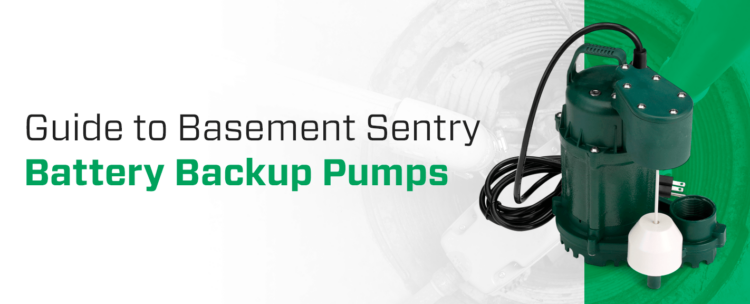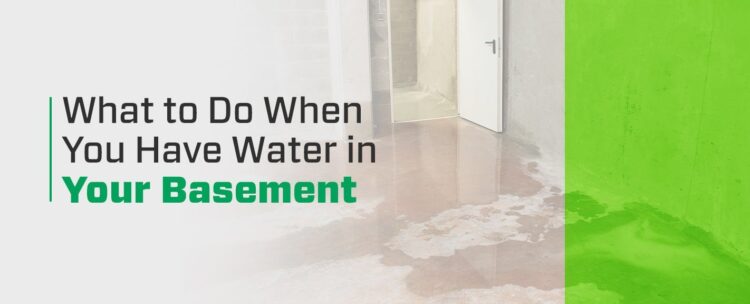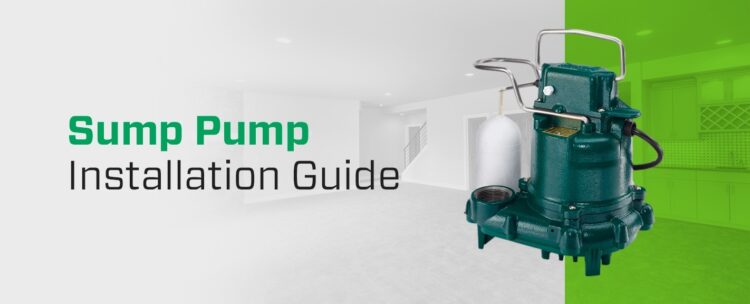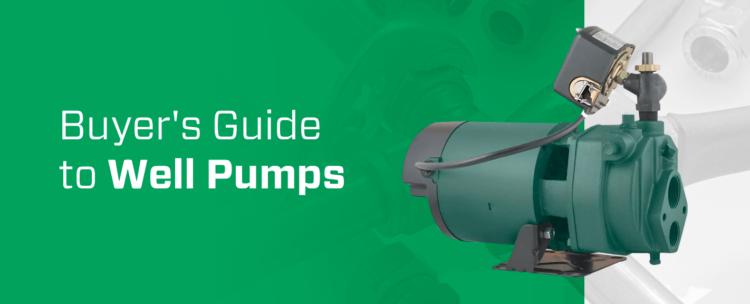
If you need to replace your well pump, consider investing in a high-quality, efficient jet pump. Since it doesn’t go underground like a submersible unit, it’s easier to clean and repair. Depending on your well or water source’s depth, you can choose either a shallow well jet or a convertible configuration. This guide to well pumps can help you find the right pump for your application.
How Does a Jet Pump Work?
A well jet pump is an aboveground device that uses centrifugal force and ejection to draw water from a well or other source. This appliance blows water through a venturi to establish a vacuum that pulls water through and sends it out the other side with an impeller. As the pressure increases, the unit can draw water from a well at a significant depth.
What Is a Well Jet Pump Used For?
The purpose of a well jet pump is to supply water for these home or farm applications:
- Bringing potable water to a house’s sinks, showers, tubs and pipes from a well.
- Providing water for a sprinkler to care for a garden.
- Turning on a water-powered radiator.
- Giving your home hot water.
- Irrigating water to keep your large acreage clean and healthy.
- Removing unwanted water from a pond or other body of water.
- Boosting water pressure for use inside the house or on the field.

Types of Jet Pumps
Consider the characteristics of each type of jet pump to find the appropriate product for your property:
- Shallow jet well pump: A cast-iron shallow jet well pump draws water from a well of 25 feet deep or lower. The unit sits in a housing mounted on the well and pumps water at a rate of 15 gallons per minute. The horsepower for a shallow well is three-fourths hp, and it typically runs at 115 or 230 volts, depending on your home’s electrical requirements.
- Convertible jet pump: A cast-iron convertible jet pump can accommodate both wells and other water sources up to 70 feet deep. The horsepower for a convertible jet well pump is 1 hp, and it can draw water at a rate of 10.6 gallons per minute. Like the shallow well unit, a convertible one can run at 230 or 115 volts. It features two holes for pipes that can draw water for both shallow and deep well applications.
Each type features the following components:
- Electric motor: This component powers the water well pump through its connection to your home’s electricity supply.
- Impeller: The impeller features rotating blades that use centrifugal force to push the water out of the pump.
- Foot valve: A foot valve causes the water flow to travel only in one direction into the pump. Even when the unit isn’t running, the foot valve maintains the pump’s pressure and prime.
- Check valve: This component prevents water from going back into the pump after a pipe has brought it out.
- Pressure switch: A pressure switch opens and closes the pump’s electrical contacts according to its pressure. Based on water usage, the unit activates the connections at the lower or “cut on” pressure and turns them off at the higher or “cut off” level.
- Air tank: An air pressure tank stores pressure to create a sufficient amount for your pump. Without the appropriate pressure, the unit could short cycle or turn on and off too frequently.
- Ejector: This component features a nozzle and venturi that establishes a vacuum to bring water up from the well against the force of gravity.
If you ever need to replace your jet pump, it also helps to replace these components because they need to complement your specific product’s model and manufacturer. Even though most of these parts are inside a shallow jet well pump, they also come in an ejector kit for a convertible one.
Benefits of a Well Jet Pump
There are many benefits to owning a well jet pump and each type of jet well product has its own set of advantages. Here are the benefits of a shallow jet well pump:
- It can accommodate wells with a smaller diameter.
- It’s lightweight and easy to install.
- It contains durable materials that can withstand rust, corrosion and wear.
- It features simple mechanics that don’t need a lot of maintenance.
- Since it has a lower horsepower, it can help you save money on your utility bills.
In comparison, consider the advantages of a convertible jet pump:
- It can draw water from shallow and deep wells so you can use it for various applications.
- It also features durable, corrosion-resistant materials.
- It has a higher horsepower, so it can draw water more quickly.
Now that we understanding the capabilities and benefits of shallow well and convertible jet pumps, we will walk through how to determine which jet pump is right for your application.

How to Choose the Right Jet Pump
If you’re unsure about which type of unit you need for your residential property, consider replacing it with the same type you already have. You may find a similar product with new technology, but you may want to consider whether your plumbing can accommodate a new system. The manufacturer can advise you about which units would work efficiently for your water supply.
As you search for a jet pump, consider these factors:
- Well depth: The depth of your well or water source can help you figure out which jet pump your property needs. You may want to measure how deep your well is before you purchase a new jet product. You can take a fishing line or a long string and tie a weight to the end of it, dropping it further into the ground until you no longer feel the weight. The length of the line is where the water in your well begins.
- Horsepower: A well pump’s horsepower determines what depth it can draw water from and what pressure it can maintain. If your unit has a higher horsepower, it can give you more reliable water pressure for your water fixtures and appliances. You can find out the horsepower of your desired unit on its packaging.
- Your property’s water needs: The jet pump should provide water at the same rate as the fixture or appliance requires. If the unit expels too much pressure, it can damage your sprinkler system or washing machine. Even though it seems to make sense that a convertible jet pump is better because it has a higher horsepower, it may harm your appliances that don’t have a high pressure capacity.
- Household size: The purpose of a well pump is to provide enough water for the devices and fixtures on your property. Consider how many people live in your home and which water sources they use. If you’re replacing your unit, you may need to invest in a bigger size if you’ve expanded your family or installed new appliances.
At Zoeller at Home, we have a team of experts that are happy to help find the best jet pump for your application. You can contact us directly, or use our live chat function.
Applications of Shallow Jet Well Pumps
A shallow jet well pump effectively pulls water from wells less than 25 feet deep. It usually needs less than 1 hp to function, and it doesn’t provide as much water pressure as a convertible jet configuration.
Besides wells, this unit can also get rid of excess water from a drainage ditch or pond. Your property may benefit from this product after heavy rainfall that could flood your yard or surrounding area. It can also provide water that you may boil for drinking during emergencies and natural disasters.
Applications of Convertible Jet Pumps
A convertible jet pump can pull water from wells and other sources — such as streams, rivers and lakes — between zero and 70 feet deep. It can also provide consistent water pressure for the various appliances and water fixtures throughout your living space. You may benefit from having this unit on your property if your well’s water table fluctuates or you have a deep well that needs a higher horsepower.
There are added costs associated with a professional to install your jet pump for you. You can save by learning how to install a well jet pump yourself in our step-by-step guide.

How to Install a Jet Well Pump
An aboveground well pump is more convenient to install on your own than other configurations. Before setting up your unit, it’s a good idea to consult the instruction manual in the packaging to make sure you install it correctly. Your product’s electrical and plumbing requirements depend on its type, model and manufacturer.
In general, you’ll need the following materials:
- Pliers to connect the bolts and nuts to the pump.
- Pipes to run from the well to your appropriate water applications.
- Crimp connectors to hold the piping to the well pump.
- Wire strippers to cut wires and set up electricity to the well pump.
- Bucket to catch the water that comes out of your old pump.
After you’ve gathered your tools, you can follow these steps for installing the unit:
- Turn off the water supply and disconnect your old system: Before replacing your old well pump with a new one, it’s essential to turn off the water supply to avoid damaging your well. You could also become seriously injured if you get electrocuted, and your water supply can become contaminated if it continues running. You should also disconnect the pressure switch’s electrical wires and the suction line from the pump’s head and release your existing unit’s pressure.
- Remove your old pump: If you’re replacing your pump, take the old one out of the housing above your well. Drain the liquids and pressure from the pump, keeping the discharge line secure to prevent property damage and injury. It helps to have a bucket underneath the old pump so you can control the liquids coming out of it.
- Check the existing components for damage: As long as your piping and lines are intact, you can use them for your new pump. If they have any rust, corrosion or deterioration, you’ll probably want to replace them. You may also need to replace the old line if you notice unwanted debris, rust, lime or scale on it.
- Prime the pump: The prime is the water that sits in the housing from the water source and the pump’s supply line. Before you can use your jet pump, you need to prime it to draw water with adequate suction. Take off the priming plug on the wet end of the new pump. Fill the pump with water until it doesn’t bubble anymore, connect the pump to electricity and ensure the water pressure is sufficient.
- Cover the well: To prevent foreign objects from falling into the well and contaminating your water supply, cover the well when you’re installing the pump.
- Connect the pipe to the new pump: Set up the existing pipe into the new pump’s bladder tank. Set up a mounting bracket to the bladder tank, and mount the new pump to the bladder tank. Make sure the suction and fittings are tight to provide proper air and water flow.
- Set up the jet pump: Follow the manufacturer’s instructions for connecting the jet pump and its various components to your well. As you attach it, make sure all joints are watertight and airtight to the well to prevent leaks.
- Adjust the pump mounting height: If necessary, raise or lower the pump to accommodate the plumbing connections. The pipe needs to be close enough to the pump to prevent pulling down on the pump and damaging it.
- Test the pump: Now that you’ve installed the new pump, run it for a few minutes to check the water coming out of it. The water should be clean and free of debris before you use it.
How to Maintain a Jet Well Pump
A jet pump is more convenient to maintain than other types of well pumps because its aboveground installation allows you to notice damage and fix it as necessary.
Consider these tips to enhance your jet pump’s life span after you’ve installed it:
- Inspect your well pump for dirt and other clogs that could affect how it works, especially if it keeps turning on and off frequently.
- Repair your pump according to the user manual, or consult the manufacturer for assistance.
- If you notice a change in water pressure, prime your pump in the same manner as when you installed it.
- Adjust your pressure switch with the large nut based on your application’s requirements.
- Avoid adjusting the small nut, because it cuts your pressure on or off and can reduce the pump’s life span when you don’t use it correctly.
- Winterize your jet pump if you don’t have space to store it inside during the cold months.
- Avoid leaving your pump out in direct sunlight and harsh rainstorms.
- Keep your pump in a housing that provides adequate airflow.

Buy a New Jet Pump From Zoeller at Home
A jet pump can help you conveniently bring water from a well into your home, or expel water from an area where you don’t want it. Whether you need a new shallow well or convertible jet pump, we have high-quality pumps in our inventory.
You can purchase one directly from your local Lowe’s home improvement store and set it up on your property by yourself in no time. Enter your zip code into our Retailer Locator to find a retailer near you. For more information about our product’s specifications, contact us online to speak with one of our representatives.
Page updated on: April 15, 2021



